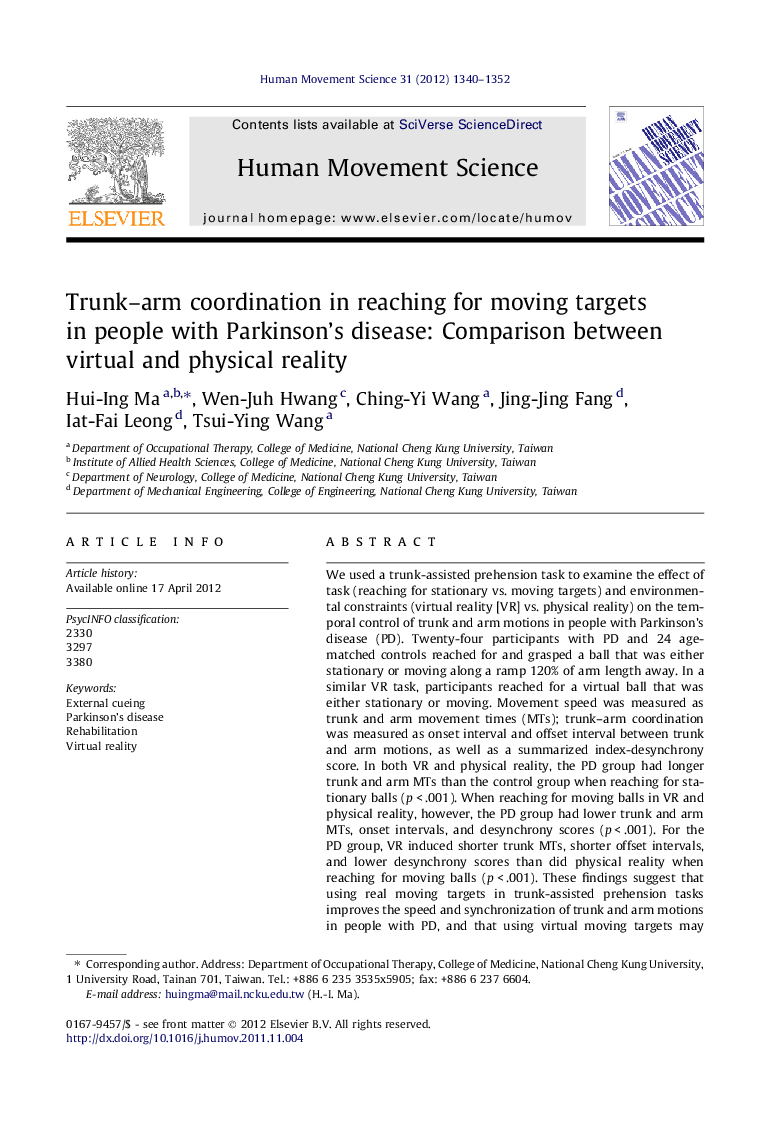| Article ID | Journal | Published Year | Pages | File Type |
|---|---|---|---|---|
| 928391 | Human Movement Science | 2012 | 13 Pages |
We used a trunk-assisted prehension task to examine the effect of task (reaching for stationary vs. moving targets) and environmental constraints (virtual reality [VR] vs. physical reality) on the temporal control of trunk and arm motions in people with Parkinson’s disease (PD). Twenty-four participants with PD and 24 age-matched controls reached for and grasped a ball that was either stationary or moving along a ramp 120% of arm length away. In a similar VR task, participants reached for a virtual ball that was either stationary or moving. Movement speed was measured as trunk and arm movement times (MTs); trunk–arm coordination was measured as onset interval and offset interval between trunk and arm motions, as well as a summarized index-desynchrony score. In both VR and physical reality, the PD group had longer trunk and arm MTs than the control group when reaching for stationary balls (p < .001). When reaching for moving balls in VR and physical reality, however, the PD group had lower trunk and arm MTs, onset intervals, and desynchrony scores (p < .001). For the PD group, VR induced shorter trunk MTs, shorter offset intervals, and lower desynchrony scores than did physical reality when reaching for moving balls (p < .001). These findings suggest that using real moving targets in trunk-assisted prehension tasks improves the speed and synchronization of trunk and arm motions in people with PD, and that using virtual moving targets may induce a movement termination strategy different from that used in physical reality.
► We examined trunk-arm coordination in Parkinson’s patients and in healthy controls. ► Participants reached for stationary and moving targets in physical and virtual realities. ► Moving targets induced fast and synchronized trunk and arm motions. ► Patients had different movement ending patterns in virtual and physical realities.
